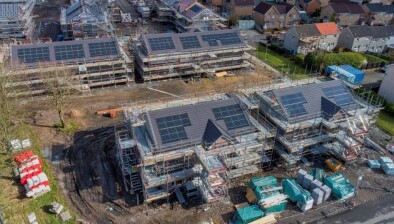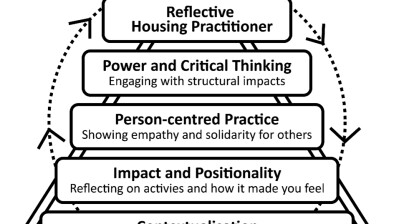Anthony Pycraft: Amid flammable cladding risks, is it time to rethink our sprinkler mandate?

Anthony Pycraft
Anthony Pycraft discusses the ongoing risks of unsafe cladding on residential buildings in Scotland and argues for the proactive retrofitting of sprinkler systems to enhance resident safety, rather than just returning buildings to their previous state.
In the latest Scottish cladding remediation estimates, 23% of the country’s high-rise (18m+) residential buildings and up to 10% of mid-rise (11-18m) residential buildings may still require work to alleviate fire risk from external cladding systems. When you consider that we recently marked the eighth anniversary of the Grenfell Tower disaster, this has left residents, in up to 1,450 Scottish residential blocks, in a state of perpetual risk for close to a decade.
We know the process of cladding removal is both expensive and frustratingly slow, variably impacted by legal disputes, budget allocations and the availability of labour and materials to deliver often complex and logistically challenging projects. But does cladding removal actually make buildings, and therefore residents safer? The simple answer is of course yes. By removing a combustible element from a building’s façade, we reduce the chance for fire to spread externally and envelope a building with the tragic consequences seen at Grenfell Tower.
But what if the cladding was added in the past 10-15 years to improve the aesthetics of a residential block and boost thermal performance? It’s removal merely reinstates the building to its previous state – so have we actually improved safety for our residents, or just removed the increased risk we added? For newer blocks originally specified with unsafe cladding, its removal certainly reduces a risk factor, but, in many instances, has also revealed additional hidden risks that then need to be addressed.
If our goal is to enhance safety for our residents, and this really should be our objective and not just to reinstate the status quo, then it’s worth considering an approach that runs in parallel with the cladding remediation programme. Scotland is already more ambitious than the rest of the UK in its attitude to sprinklers, mandating their installation in all new build social housing, flats and shared multi-occupancy residential buildings since 2021.
But here’s an opportunity for Scotland to go further, and genuinely take a lead position in its national fire safety programme, by building added resilience into existing residential properties, and why not start with those 1,450 at risk buildings it has already identified?
For residents facing an uncertain wait for decisions to be taken around cladding remediation, a targeted retrofit programme of sprinkler installations is a pro-active measure with a long-term safety legacy. Sprinklers represent the gold standard in active fire suppression technology and the proof of their effectiveness is simply that nobody has died in the UK from fire when a working sprinkler system has been in operation.
Scotland has already accepted the necessity for residential sprinklers, but the case for wider adoption across existing buildings will grow louder, especially for those living in blocks with unsafe cladding. The opportunity for real leadership in this space and the potential to advance research to inform cladding remediation programmes should be a clarion call to the Scottish Government to take action right now.
- Anthony Pycraft is head of delivery at Harmony Fire.









